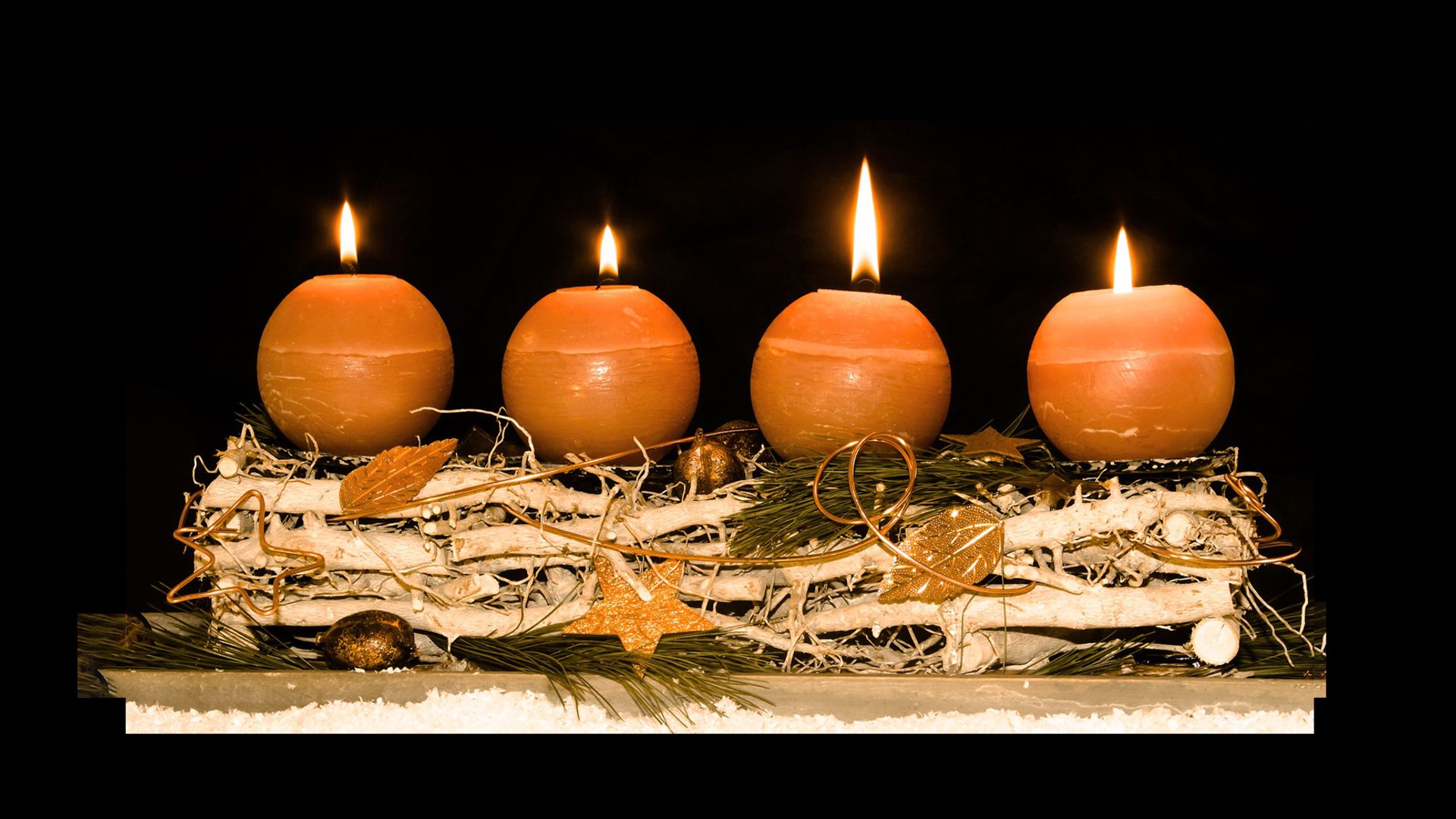Binding an Advent Wreath
Symbol of faith or modern accessory?
It decorates almost every living room during the festive season - the Advent wreath. Exuding warmth and peace, it is found especially often in quintessential farmhouse parlours, nestled in a corner beneath a traditional wooden crucifix. Yet it is so much more than a small evergreen wreath, decorated with four red candles and four red bows. So, where does the Advent wreath tradition come from? If you do a little research on the internet, you will soon find out. Wichern's Advent wreath The Advent wreath was originally invented in 1839 by the Protestant-Lutheran theologian and educator Johann Hinrich Wichern. According to popular legend, the Hamburg theologian founded a home for poor children. As Christmas approached, the children began to ask when Christmas would finally come, so he built a wooden wreath with 24 small red candles and four large white candles from an old wagon wheel to create a "calendar". The small red candles were for workdays, the four large white candles for Sundays. The days until Christmas Eve were counted down by lighting the candles every day.
Advent wreath with four candles Over the years, the original Advent wreath of wagon wheel proportions developed into the smaller evergreen Advent wreath with fir sprigs and four candles that we all know and love today. In 1925, the first Advent wreath was hung in a Catholic church (Cologne). Over time, the Advent wreath tradition in churches was adopted by households as a symbol of Advent. This custom spread from Germany to the entire Christian world.
Symbolism of the Advent wreath Symbolically ,it represents the increasing presence of light during the pre-Christmas period as a sign of the growing anticipation of the birth of Jesus Christ, who is referred to as the "light of the world" in the Christian faith. There are also other interpretations relating to the shape of the circle (the globe), the four candles (cardinal points) and the colours of the candles and ribbons. In the Catholic Church, Advent wreath candles bear the colours pink and purple, which have their own special significance.
Traditionally, three candles are purple and one is pink, which is lit on the third Sunday in Advent. This colour is inspired by the purple priestly vestments. On the Sunday of the third Advent, Gaudete, when Christmas Eve is imminent, the liturgical vestments may also be pink to express the great feeling of joyful anticipation, which is why the third candle shares the same colour and significance.
Preserve tradition or embrace modernity? Much has changed in terms of decor and an Advent wreath not only has a Christian significance, but is also seen as an ornate centrepiece for the home. Needless to say, there is a desire for it to be colour-coordinated with one's home decor, so Advent wreaths with candles can be seen in all colours and variations. Moreover, an Advent wreath does not necessarily have to be round, but can also be oblong..
Blend of materials or keep it original? Gold, silver, bronze, but also shades of brown and rosé are often at the top of the colour list. Advent wreaths are made from all kinds of materials. Not only are sprigs of fir suitable as a basic element, but also wood, straw and felt. The classic evergreen Advent wreath with red candles, however, is still very popular. This is proof that tradition does not have to give way to modernity. There is ample room for both, and everyone can decide for themselves which style of Advent wreath they prefer to celebrate the imminent arrival of baby Jesus!
